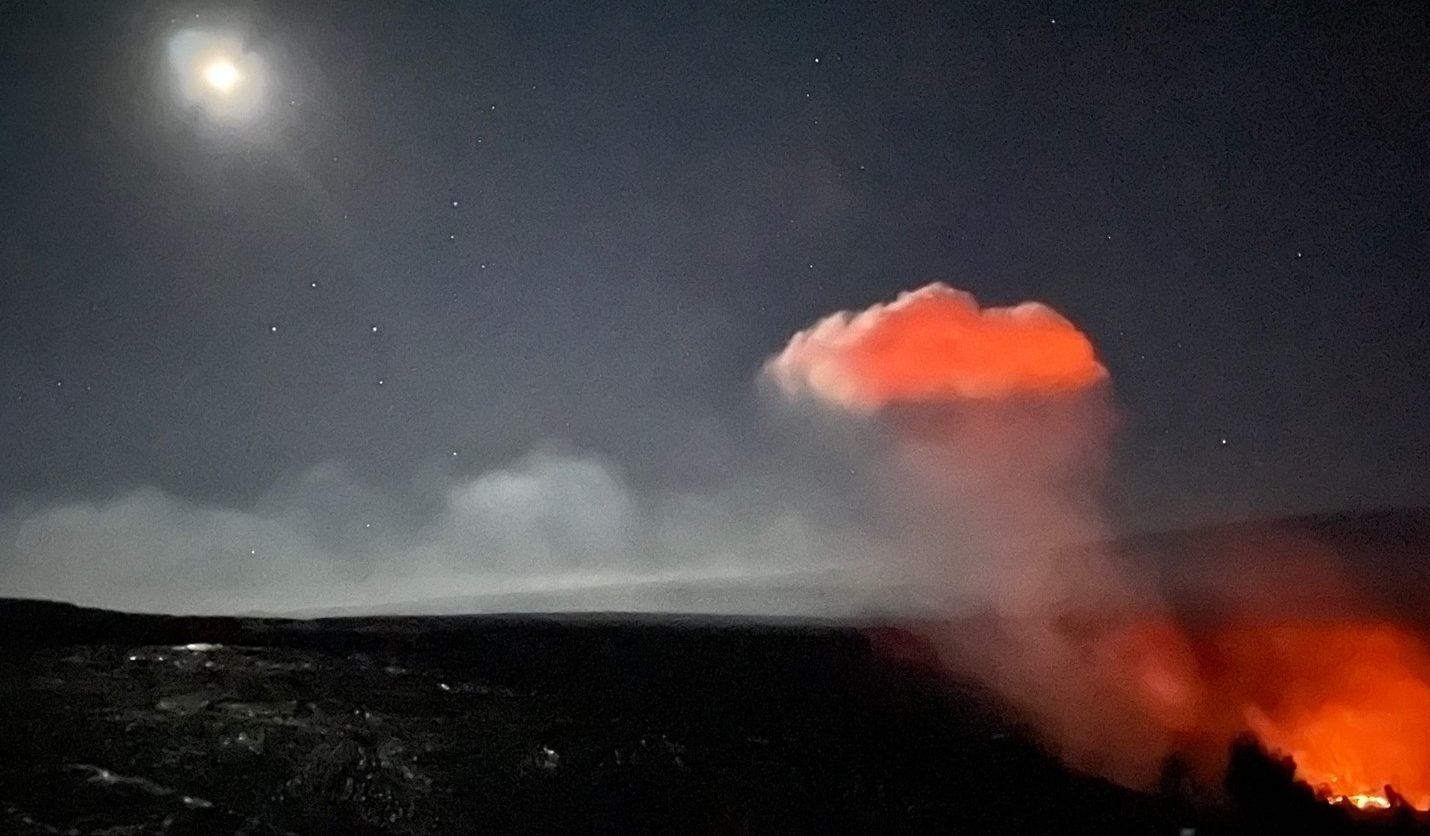Hawaii, a paradise known for its stunning landscapes and tropical allure, is also home to one of the most active volcanic regions on Earth. The island of Hawaii, commonly referred to as the Big Island, has experienced a series of recent volcanic eruptions that have captivated the world with both awe and concern. Let’s delve into the most significant volcanic events that have occurred on the Big Island, their impact on the local communities, and the remarkable resilience of the people living in the shadow of these geological marvels.
The Hawaiian Islands are a product of volcanic activity, formed by a hotspot beneath the Pacific Plate. As the plate moves over the hotspot, magma rises to the surface, creating new land and shaping the landscape. The Big Island is home to two active volcanoes: Kilauea (the world’s most active volcano) and Mauna Loa (the world’s largest active volcano), both of which have had a profound impact on the island’s history.
The eruption of Kilauea in 2018 is one of the most memorable volcanic events in recent history. This eruption was characterized by the sudden collapse of the Pu’u ‘Ō’ō vent and the subsequent opening of new fissures in the lower East Rift Zone. Lava fountains soared to tremendous heights, and lava flows engulfed entire neighborhoods, destroying homes and infrastructure in their path. The eruption also created a massive plume of VOG (volcanic smog) that affected air quality across the island and even reached other parts of the Hawaiian archipelago.
The 2018 Kilauea eruption had a profound impact on the communities living near the volcano’s slopes. Thousands of residents were forced to evacuate, leaving behind their homes and belongings. By the end of the eruption, lava had covered over 8,700 acres of land and had caused more than 2,500 people to lose their homes. The loss of homes and livelihoods dealt a significant emotional and economic blow to those affected. Despite this, the communities showed remarkable resilience, coming together to support one another and rebuild their lives after the eruption subsided.
While Kilauea grabbed headlines with its 2018 eruption, in 2023, the Hawaiian Islands experienced one of the most significant geological events in recent history—the eruption of Mauna Loa, the world’s largest active volcano. This cataclysmic event captivated the world and had profound impacts on the local communities and the environment.
The eruption of Mauna Loa began with a series of seismic activity and increased volcanic gas emissions, signaling the awakening of the colossal volcano. As the days passed, the tremors intensified, and lava slowly made its way to the surface. On the fateful day of the eruption, a massive plume of ash and smoke towered over the island, announcing the volcano’s explosive reawakening.
Mauna Loa’s eruption also had a significant impact on the local communities living on Hawaii’s Big Island. Although no homes were subsequently lost, evacuation orders were issued to safeguard residents from potential lava flows and hazardous volcanic gases. Thousands of people had to leave their homes behind, unsure of what they would return to once the eruption subsided causing significant stress to already traumatized communities.
Beyond the human impact, the eruption had substantial environmental consequences. The release of volcanic gases and ash affected air quality, posing health risks to both humans and wildlife. The lava flows reshaped the landscape, endangering sensitive ecosystems and natural habitats. The long-term effects of the eruption on the island’s flora and fauna are still being studied by scientists.
The 2023 Mauna Loa eruption provided an opportunity for scientists to study the volcano’s behavior and gain valuable insights into volcanic processes. Ongoing monitoring efforts allowed experts to predict the eruption’s intensity and potential paths of lava flows, enabling authorities to issue timely evacuation orders and minimize the impact on human lives.
The eruption of Mauna Loa in 2023 underscored the importance of preparedness and resilience in dealing with natural disasters. Hawaii’s emergency response teams and community organizations demonstrated exceptional coordination and swift action in ensuring the safety of residents and visitors during the eruption. Lessons learned from this event will undoubtedly contribute to better disaster preparedness measures in the future.
The 2018 Kilauea eruption and the 2023 Mauna Loa eruption left an indelible mark on the history of Hawaii’s Big Island. As communities continue to rebuild and recover, the memory of this awe-inspiring display of nature’s power will remain. The eruptions served as powerful reminders of the need for constant vigilance, preparedness, and scientific research to mitigate the impact of future volcanic events. Through resilience and unity, the people of Hawaii will stand strong in the face of nature’s unleashed fury, ensuring that their island home remains a beacon of hope and strength for generations to come.
I have taken many photos of the ongoing eruptions at Kilauea, but the photo you see here is one of my favorites. I took it back in October of 2022, one night before Halloween. I love it because it shows the stark contrast between the big bright moon shining down on the ancient lava fields to the left of the eruption going on in the caldera, with the little cloud above glowing from the lava and the stars dotting the night sky. The picture doesn’t really do it justice as it was such an awe-inspiring sight in person. The feeling you get when you’re up there near one of mother nature’s greatest shows in such a sacred space is a feeling that is hard to put in words, but it’s spiritual to say the least.
Come and visit these massive giants on the beautiful Island of Hawaii to see for yourself the landscapes and people that have been shaped by the raw power and fury of Mother Nature herself. While you’re here, make sure to book your food tour with Destination Food Tours in Hilo, HI to taste the flavors this rich environment provides.

